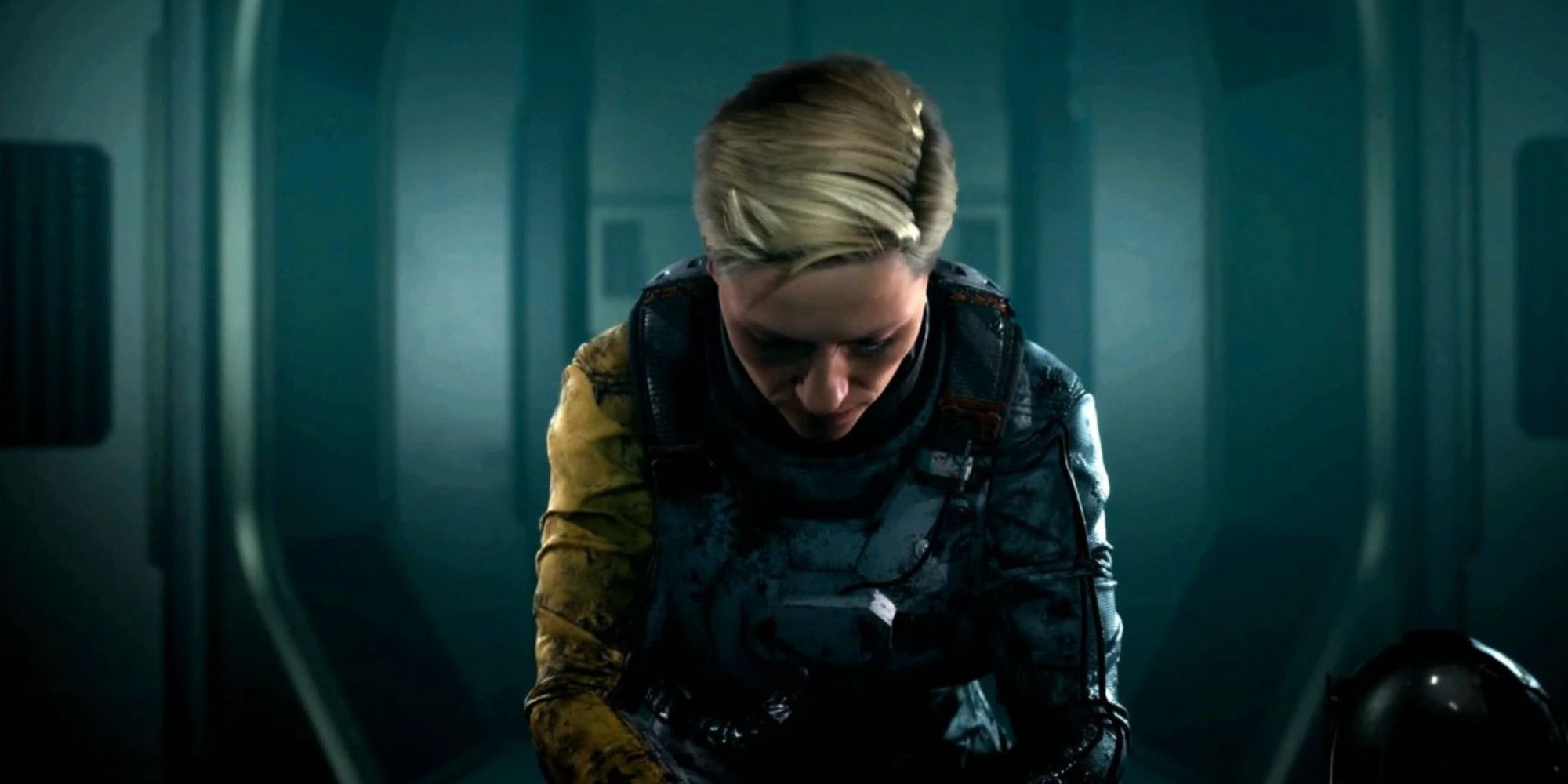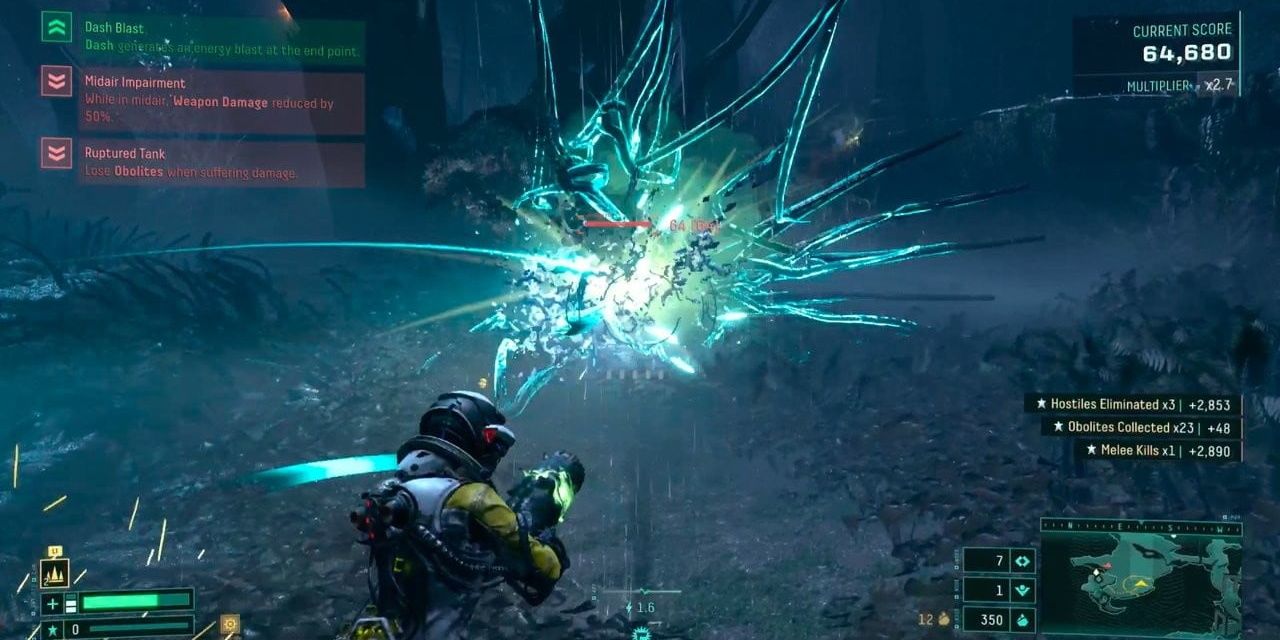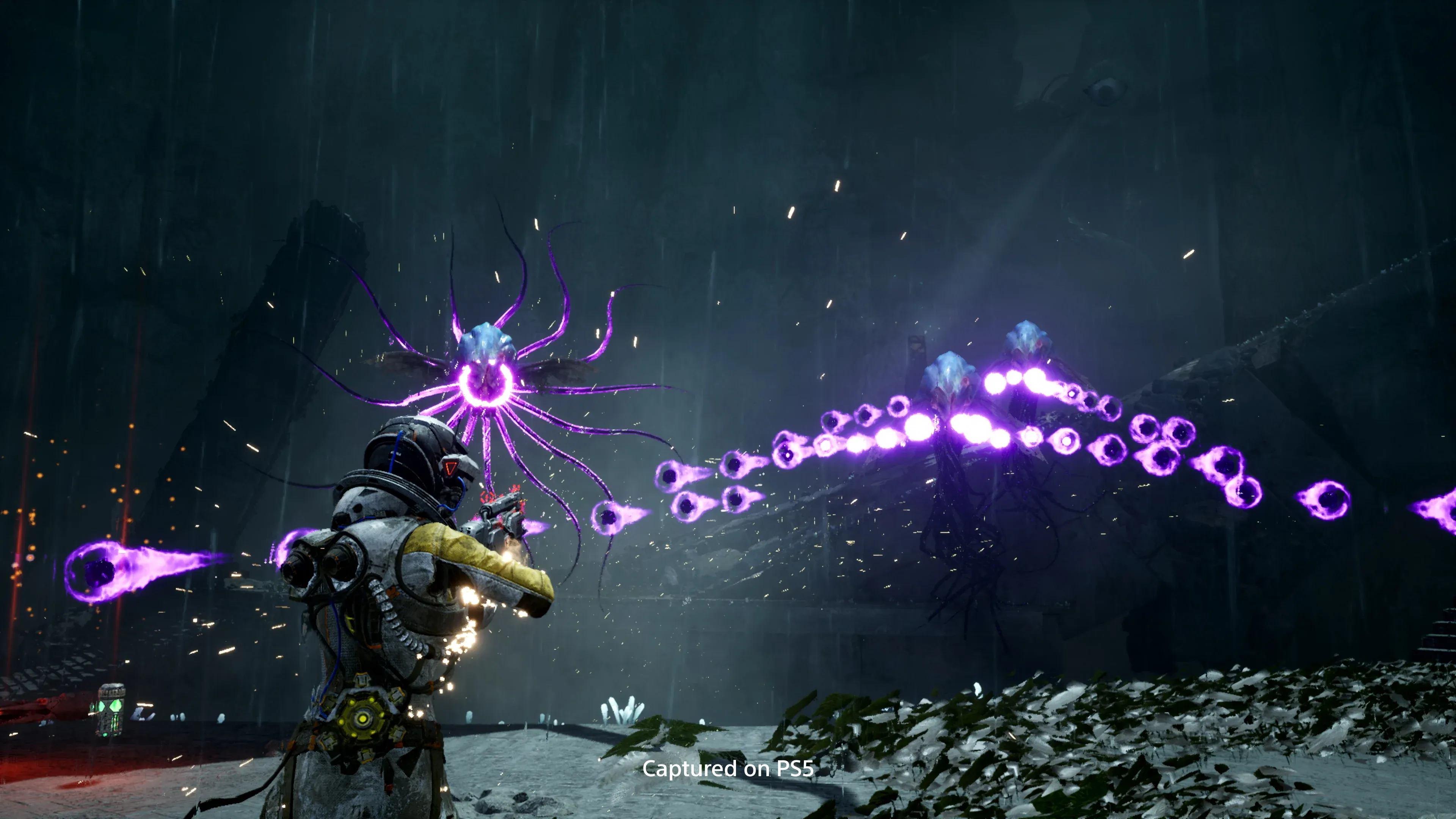I didn’t play Returnal when it came out in 2021 because I wasn’t in the mood to have my ass kicked over and over again, but I felt like I knew a lot about it. I heard it was painfully difficult and that a lot of people never made it past the first boss. I heard it was the first great 3D bullet hell and that more games should follow in its footsteps. I heard that the DualShock features were great and that the lack of a System Save was terrible. But what I didn’t hear was anything at all about the story, or what Returnal is actually about. After finally playing through it this weekend, it’s the only thing I want to talk about. There’s something profound about the way the experience of playing Returnal mirrors the themes it explores, and I think Housemarque deserves a lot more credit for the novelty it brought to both the roguelike and the time loop game.
I’m going to unpack the plot and themes of Returnal in a spoilery way, but know that I could never cover everything in a single article. Part of what has enraptured me about this game is just how layered and complex it is. I feel as though I’m going to keep making connections and understanding things in a new way long after I set Returnal aside, which is a lot more than I expected from a shooty game about dodging laser beams.
Returnal follows Selene Vassos, an astronaut for the ASTRA Corporation who, against orders, follows a signal through space she calls the White Shadow in her spaceship, Helios. Selene crashlands on an alien planet called Atropos and, after dubbing Helios irreparable, sets out to discover the nature of the planet and locate the source of the signal that brought her there.
Selene is quickly beset with hostile creatures and soon makes a terrible discovery: she’s stuck in a time loop that brings her back to the Helios wreckage whenever she dies. It’s important to remember that it is Selene that is stuck in a loop, rather than time itself. When we begin, the planet is already littered with Selene’s corpses, as well as audio logs that, piece by piece, unravel the mysteries of Atropos.
They tell the story of a sentient species called the Hivemind that once inhabited the planet, and the society of outcasts called the Severed that were banished to the Crimson Wastes outside their citadel. As we slowly grow more powerful, one death at a time, we eventually ascend to the top of the citadel and defeat Nemesis, the last remaining sentient and seemingly the source of the signal. Triumphantly, Selene signals her location to ASTRA and is rescued. She returns home a hero and lives the rest of her quiet, comfortable life, until she one day dies of old age. Just when you think the credits are about to roll, Selene wakes up back on Atropos, lying on the ground next to the crashed Helios. It’s the most brazen fake ending of all time, and it sets up a devastating second half that I wasn’t prepared for, and one I’m still reeling from days later.
There’s quite a few clues in the first half that Atropos isn’t quite what it seems. In particular, the fact that Selene’s house has somehow been relocated to the middle of the Overgrown Ruins. You get to take a few excursions into the house, and each visit is a surreal nightmare through Selene’s memories. You also encounter an astronaut early on who appears randomly around Atropos and in the house. They wear a vintage astronaut outfit from the Apollo missions and they’re always just standing there, watching you.
In the second half, Returnal doubles down on the dreamlike occurrences and unexplainable events until you eventually start to wonder if any of this is really happening at all. In the Ruins, which have aged several decades in concurrence with Selene escaping and dying of old age on Earth, she encounters Hyperion, a tree-like being attached to a massive organ that plays a motif based on Blue Oyster Cult’s Don’t Fear The Reaper - a melody that has special significance to Selene. It’s almost as if this world was created for Selene, or more accurately, Selene created this world for herself.
The moment things snapped into focus for me was during one of the final visits to the old house when it is revealed that Selene was the one who, paradoxically, shot down Helios. This is when it becomes clear that we’re dealing in metaphors here, and it's necessary to reexamine everything that has happened so far in a new context. Selene has trapped herself in this hell. The question is no longer how does she escape, but rather why she’s here at all.
A lot of Returnal’s story is open to interpretation, and while that can often come across like a narrative cop-out, the ambiguous parts of the story befitting of its themes. Like the Xenoglyphs that Selene can translate by collecting Cryptics, the details and their meaning shift and transform as you dive deeper. Returnal is a game that’s meant to be not just endlessly played, but endlessly explored. It feels like there’s always one more secret to uncover, one more detail that’s going to tie everything together and make it all make sense, for us and for Selene.
I think we do know what happened to Selene and why she has trapped herself in this hell. As we descend through the now-frozen citadel and eventually dive into the depths of the underwater abyssal scar, our scattered, dissociated audio logs from Selene tell us about a sunken car and the son she abandoned, Helios. The ending takes us to the very bottom of the Abyss where the car remains with its headlights still on and we see the crash happen. Selene is driving down a dark country road with her son, Don’t Fear The Reaper is playing on the radio, and she swerves to avoid our mysterious astronaut standing in the road. The car crashes into the water below and sinks all the way down as Selene and her son remain unconscious. Selene wakes up and tries to rescue her son but is unable. She instead turns towards moonlight - a white shadow in the water - and breaks for the surface.
The second half of Returnal is brutally difficult - far more punishing than the first half. I usually hate when this argument gets made, but I don’t think the game would have the same weight without it. Once you realize that this is all some kind of self-imposed prison Selene is using to punish herself for what she did, you can’t help but recognize the way playing the game makes you feel like you’re punishing yourself too. The first half is meant to feel like a hollow victory. A fairly easy climb to the top of a great tower, a boss fight you practically can’t lose, and a triumphant escape from the planet. The second half is a descent, both literally through the physical world as you travel deeper and deeper into the abyss, and emotionally, as you and Selene both unravel loop, after loop, after loop.
Last year we saw a lot of examples of how the time loop can be used as a narrative and mechanical device - particularly for detective experiences - but Returnal might be the first time it’s been used for an emotional device, a metaphor for the psychic loops we can’t, or won’t escape. I suffered real despair in those final hours of Returnal, sinking into the abyss over and over again, and I can’t be certain how much of that was for Selene and how much was for myself. It’s the bleakest game I’ve ever played, and I’m not sure how much of it was actually fun, but I found it deeply affecting and hideously beautiful. I’m blown away at the audacity it took to make a first-party, triple-A game like this, and I don’t know why there aren’t more people talking about it.



